Lessons Learned from Data Entry

If you've been keeping up with my Inflation, Supply & Demand, and Eggs series, thank you for the engagement! As a quick recap,
In Part I, we started with the sticker price of eggs, benchmarking it against the Grocery Price Index to uncover their relative resilience to inflation.
In Part II, we analyzed four instances where egg prices surged beyond grocery inflation, identifying the disruptions—like Bird Flu, rising feed costs, and seasonal demand—that threw the system out of balance.
In Part III, I mapped the entire egg supply chain, connecting the dots between key factors like labor, transportation, feed costs, and energy prices.
A high level summary of the posts up to this point is as follows:
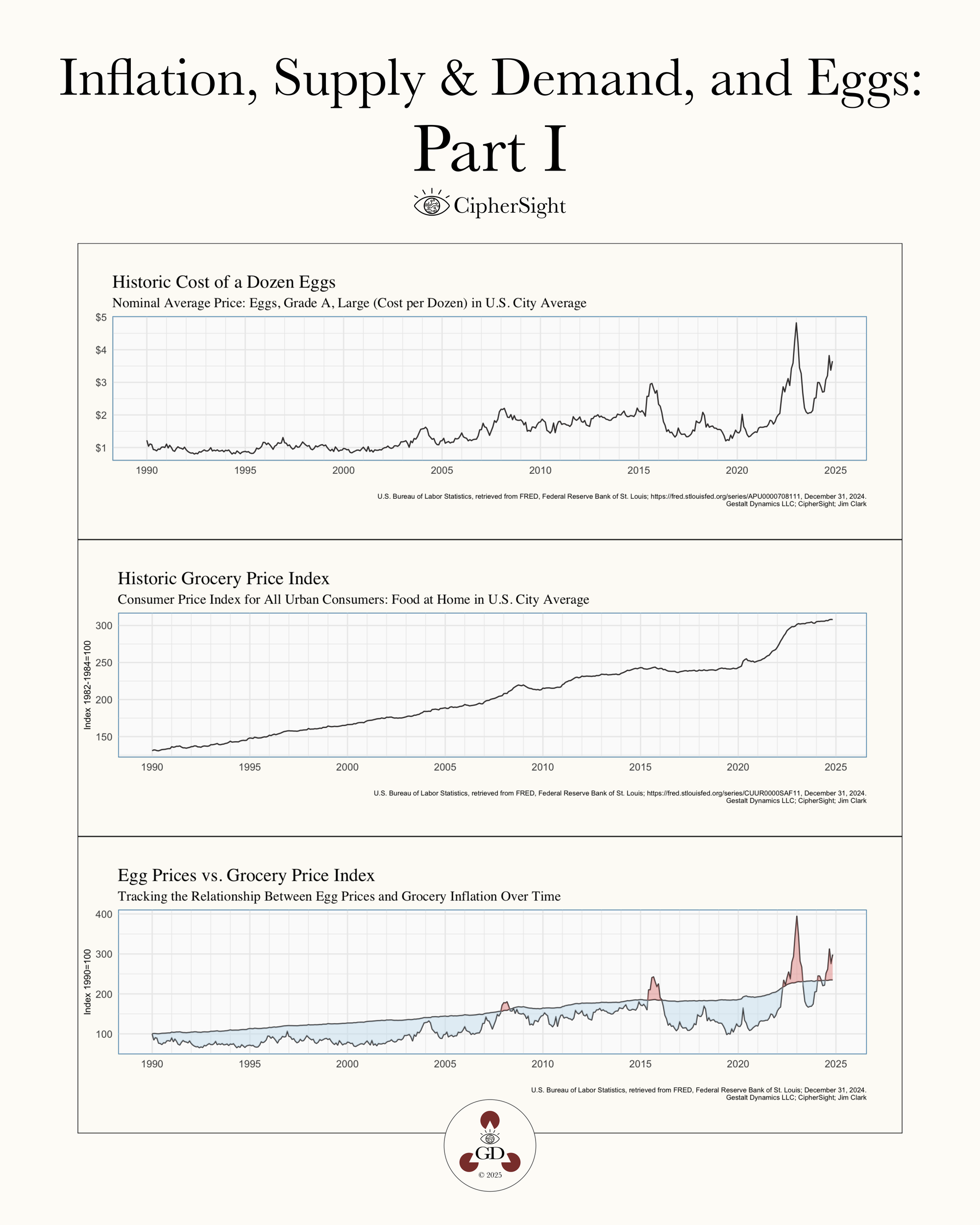
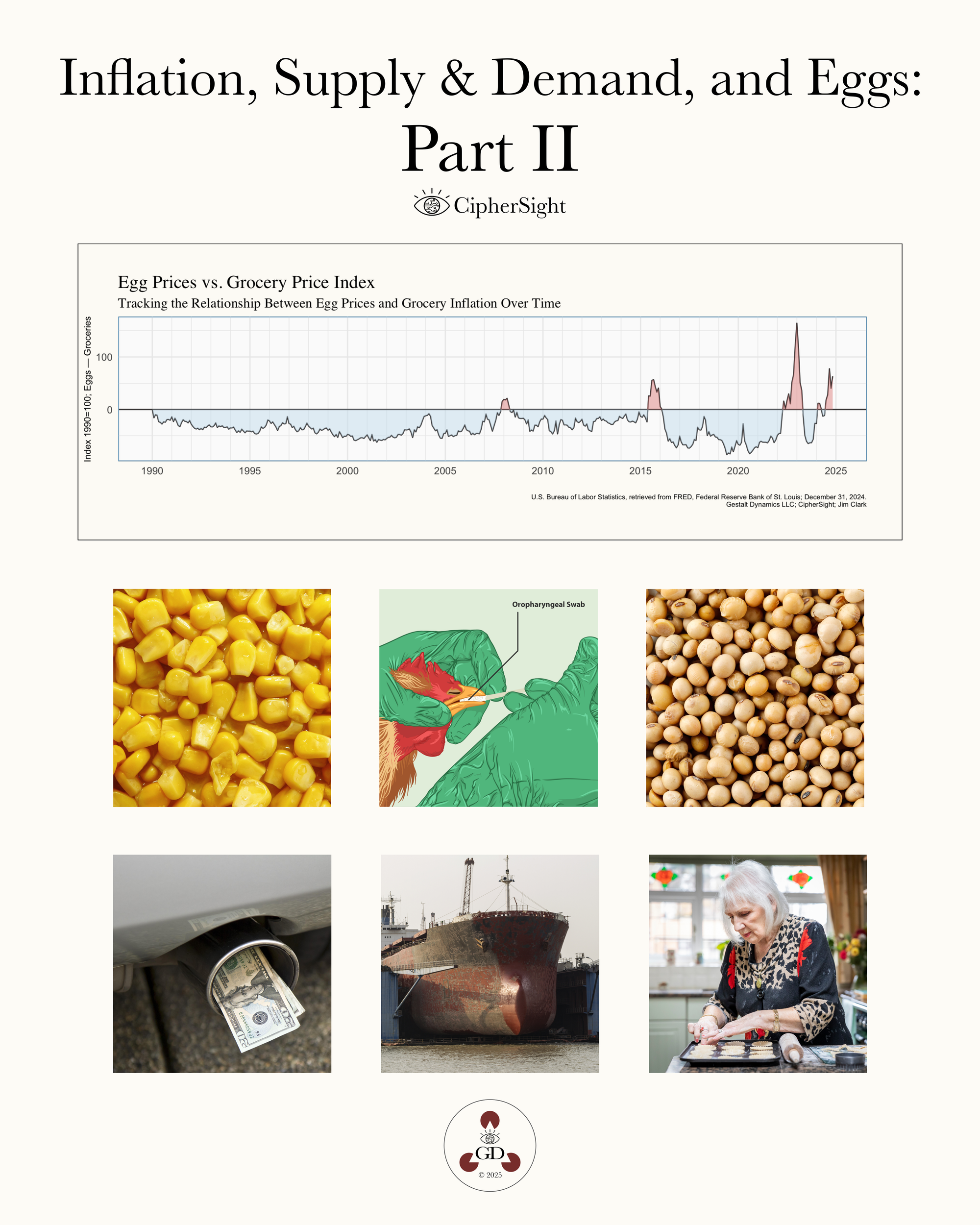
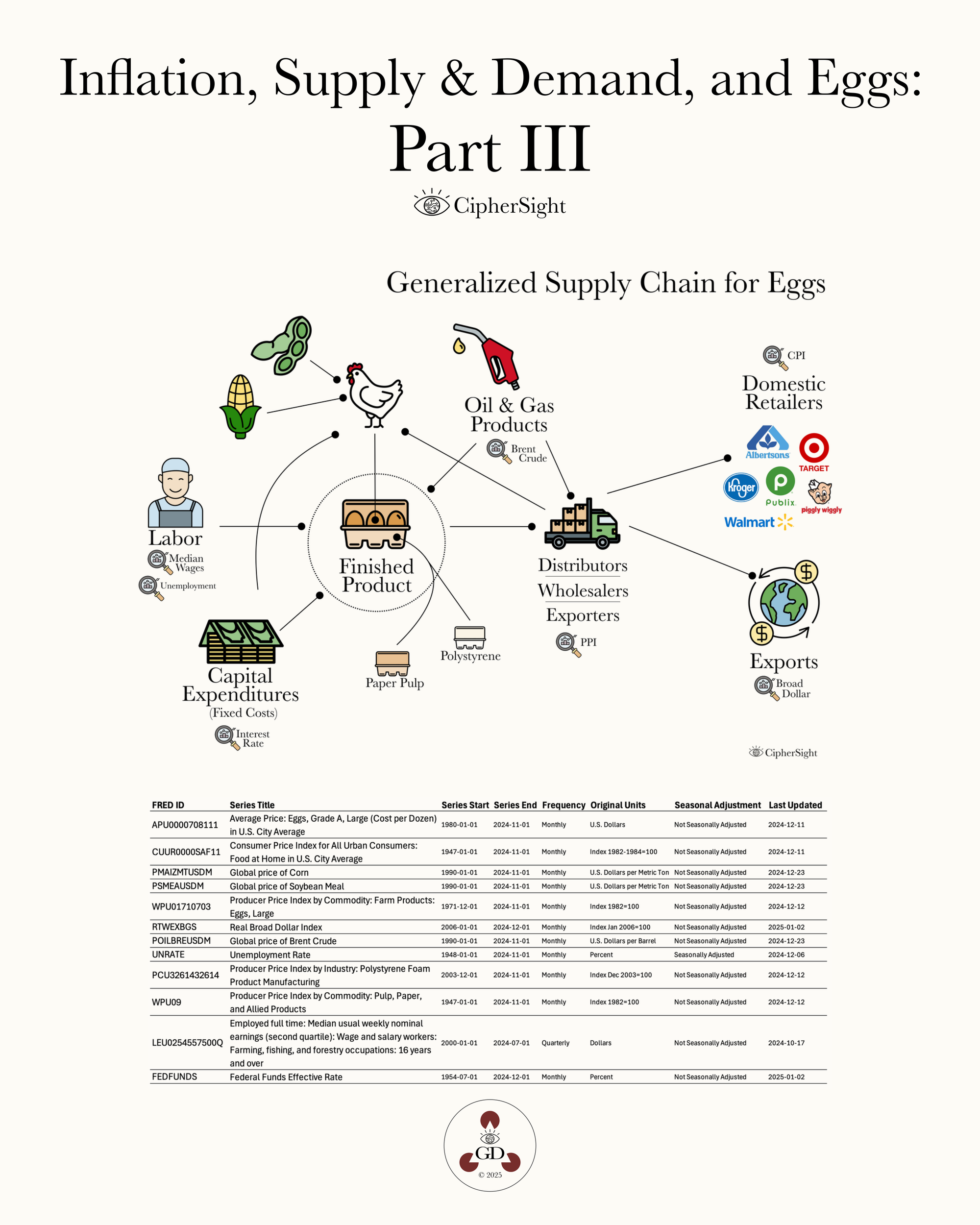
As you might have guessed, this is not Part IV (though I’m aiming to release that by the end of the week). Instead, this is a reflection on a recent data entry exercise I’ve been working through for a completely unrelated project I started years ago called The Circular Palace. This project involved designing and producing a set of playing cards to teach and practice the circle of fourths and fifths, which form the foundation of music theory.
After stepping away from my previous full-time role, I’ve finally found the time to revisit this idea and reconnect with a creative side of myself that has been dormant for much of the past decade, as my focus has been on advancing my career—and, more recently, on raising toddlers. Recently, I introduced the cards to my four-year-old, and after just two 15-minute sessions of direct instruction, she was able to arrange all the notes in order based on the number of sharps and flats in their key signatures!
Aside from encouraging my kids to explore music, this has also rekindled my wanting to get back into playing the guitar more frequently and honing my improvisational skills. This personal journey has naturally brought me to the main topic of today’s post: Lessons Learned from Data Entry.
By now, you’re probably thinking, “Wait… inflation, music theory, data entry—you’re losing me.” Let me add some context. Over the past few days, I’ve been transcribing patterns from the Guitar Grimoire for scales. My goal is to use these patterns to dynamically build practice material and integrate them with my other Circular Palace resources.
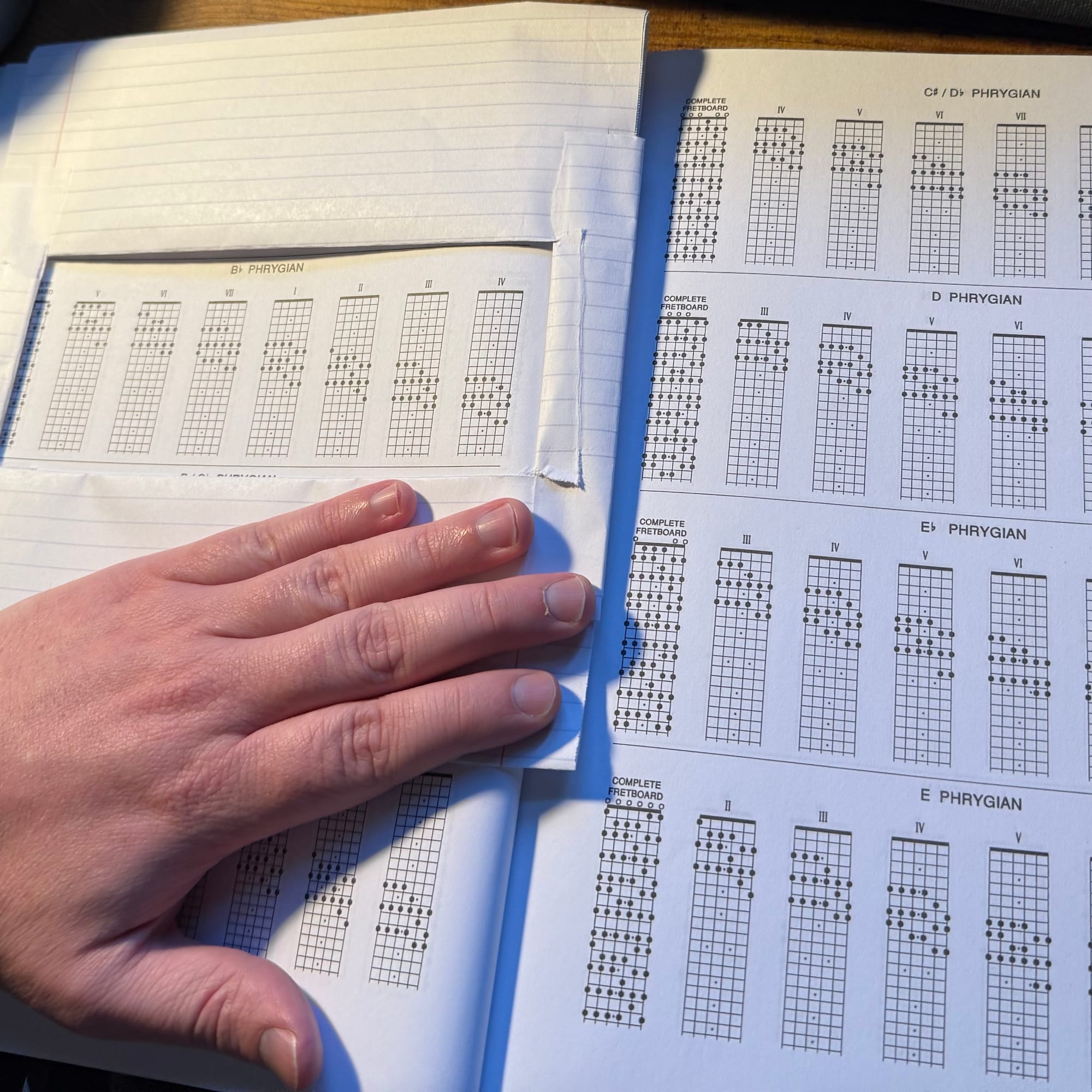
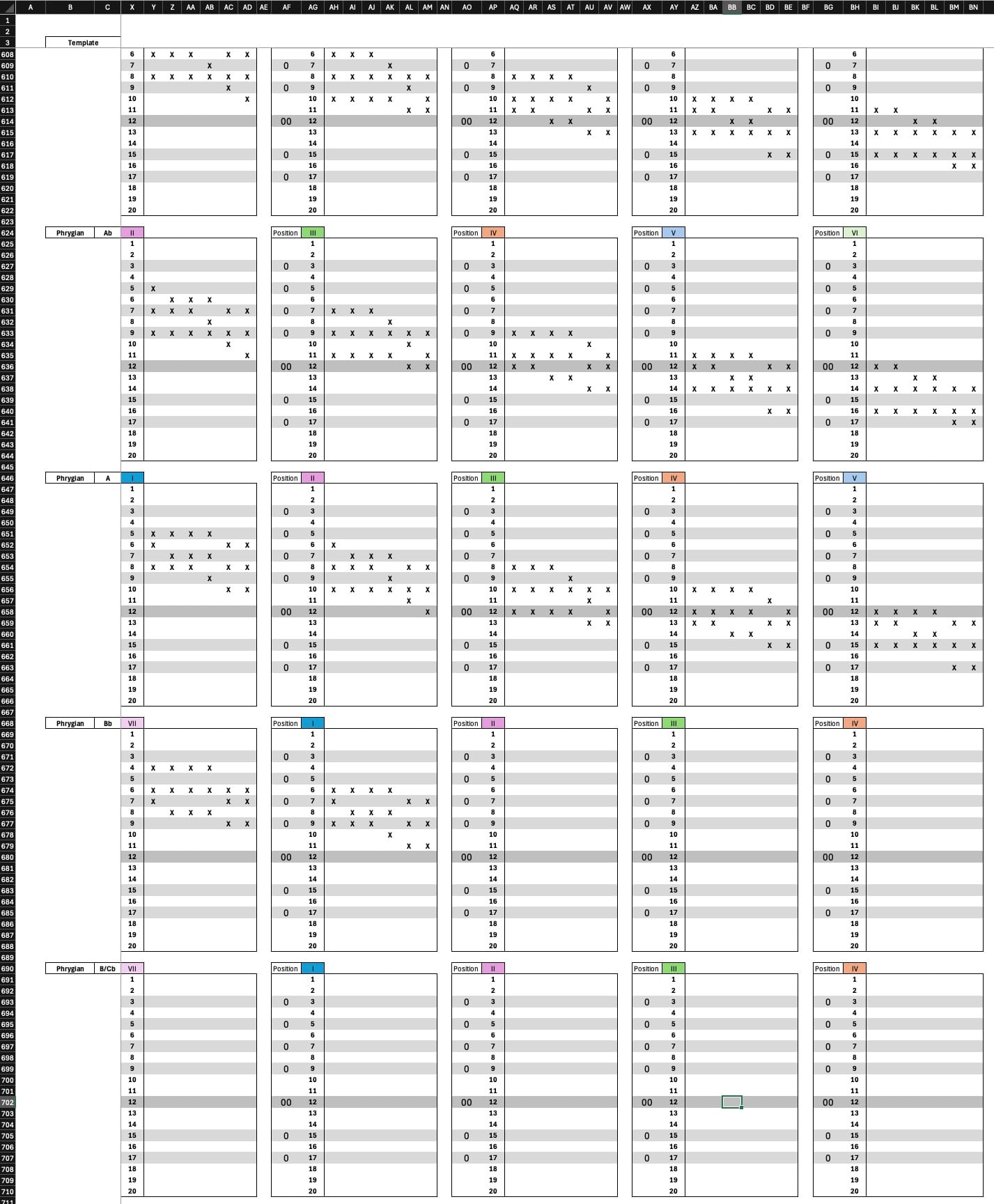
Having worked through the Ionian and Dorian modes, and partially through the Phrygian mode, I’ve placed a total of 621 X's so far and created 588 fretboard boxes (12 keys × 7 positions × 7 modes) to house these, and the remaining 1,143 X's left to go. This has been tedious. Mind-numbingly tedious. There were four main things that made it so:
- The source material was in small print and relied on fretboard markers (e.g., two dots on the 12th fret) for positioning.
- The first pattern on the left always appeared at the top of the fretboard, but its Position in the overall scale varied depending on the key.
- Each page contained four keys and seven positions, and I often lost time and focus switching between the source material and the Excel sheet to verify that the data was entered correctly.
- The sheer number of fretboard boxes (588) was daunting, and ensuring accuracy was critical for the success of the finished product. Skimping on attention to detail at this stage could lead to significant errors or bugs, ultimately compromising the integrity of the final outcome. This often led to me losing time to check and re-check the results to make sure I transcribed it accurately.
As I went about the task, I gradually identified the things that were causing delays and frustrations and worked to systematically find ways to make the process more efficient and error proof. Here were the top adjustments and lessons learned that I made as I went along:
- Templating: At the top of the spreadsheet, I created a template with blank fretboard configurations. Having this template laid out significantly streamlined the process of creating the 588 boxes. Initially, I approached this task linearly—copying the template for each key in a particular mode, filling in the X's, and then moving on to the next key. However, this proved challenging because, as mentioned earlier, the positions changed with each key. To ensure the finished product was accurate and useful, I had to spend extra time verifying the position data before marking the fretboards. This led to the development of the second enhancement:
- Chunking: To improve efficiency and accuracy, I shifted my focus to getting the positions correct for the key signatures first. I copy-pasted the templates I hadn’t yet worked with and color-coded the positions. This visual aid made it easier to track how the positions changed as I filled out the modes, allowing me to work more systematically without getting bogged down in getting the individual marks on the fretboard right.
- Identify Pain Points and Build Tools to Help Alieviate the Pain: As mentioned above previously, one of the things that kept tripping me up was losing my place in the source material as I checked the digital transcription. The most straightforward way to remedy this situation was to make a simple paper view-finder that could keep me on track.
- Trust, but Verify: The goal of these scale exercises is to help guitarists move across the fretboard using three-note patterns per string. Initially, I didn’t have a consistent technique for transcribing. I found myself frequently switching back and forth between the source material and the spreadsheet to confirm accuracy, which was both time-consuming and inefficient. After experimenting with different approaches, I settled on a method that worked best for me: transcribing by row. Each box figure has three rows (corresponding to the strings), which can be offset. By focusing on one row at a time and trusting my hands on the keyboard and my eyes on the source material, I was able to streamline the process. Once the key was completed, I’d go back and verify each box to ensure that every string contained three marks. This combination of trust during the initial transcription and careful verification afterward struck the right balance between efficiency and accuracy.
- There Will Still Be Bugs: Despite my best efforts, there will still be bugs and mistakes in the data entry. Accepting this premise now means I have an obligation to help future-me find and fix them. I'm not sure what this looks like yet, but will be sure it's addressed before shipping the final product.
Conclusion
Reflecting on this process, I’ve realized that whether it’s exploring music theory, transcribing scales, or analyzing inflation trends, the principles of persistence, attention to detail, and problem-solving are universal. What started as a tedious data entry exercise evolved into an unexpected exploration of creativity, efficiency, and adaptability.
These lessons don’t just apply to fretboard charts or spreadsheets—they’re a reminder that the systems we build, whether for music, economics, or life, require both structure and flexibility. By identifying pain points, experimenting with solutions, and embracing imperfection, I’ve not only advanced this project but also reignited a part of myself that thrives on curiosity and creation.
Thank you for following along on this slightly unconventional detour. Part IV of the Inflation, Supply & Demand, and Eggs series is still on track for release by the end of the week—so stay tuned! In the meantime, I hope today’s post serves as a reminder that even the most mundane tasks can spark meaningful insights.
Until then, enjoy this jam from a younger, cooler me:





